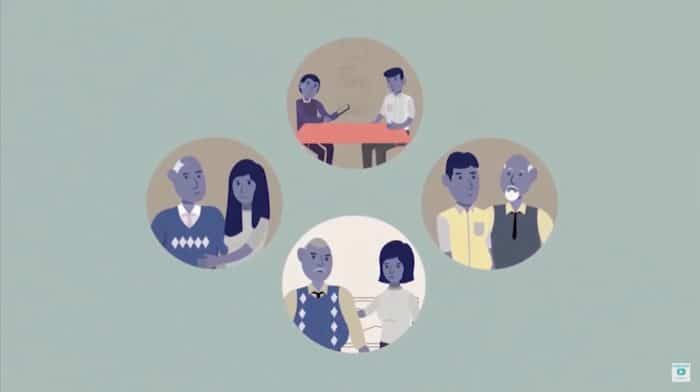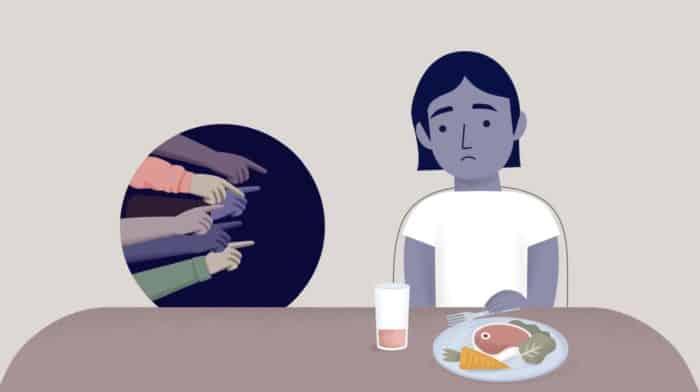Self-Isolation for Caregivers
Self-Isolation for Caregivers
As a caregiver, you (or the person you are caring for) may be called upon to self-isolate (especially in times of pandemic.) For example, if you travelled outside of Canada or were exposed to a person who was infected.
Self-Isolation
Occurs when you have no symptoms AND you may have been
exposed to a virus, so you isolate yourself to protect others and
prevent yourself from spreading it further. (See our definitions
careguide.)
Self-isolate means to:
• Stay at home
• Monitor yourself for symptoms, even if mild, for 14 days
• Avoid contact with others
There are 2 possibilities:
1. The caregiver needs to self-isolate
2. The care recipient needs to self-isolate
Pages 2 and 3 of the PDF provide guidance on how to deal with either one of these scenarios.
SCENARIO ONE: IF THE CAREGIVER NEEDS TO SELF-ISOLATE:
| Housing Situation: | Living Situation: | The Care Recipient is Fairly Independent: | The Care Recipient Is Dependent on You: |
|---|---|---|---|
| The caregiver has a separate residence to isolate to. | • If possible, the caregiver should isolate him/her self in a totally separate residence away from the care recipient. (To avoid spreading the virus.) • When you visit to give care, try to limit the rooms or areas you visit. | • If possible, find a backup caregiver to temporarily cover for you. If a backup is not an option, you can still care from a distance. • Deliver groceries to their door step or order delivery electronically. • Minimize visits by planning. • Keep in contact electronically: phone, text • Have a friend check in for you. • Do their banking, book appointments and talk to health care professionals remotely using technology. | • If possible, find a backup caregiver to temporarily cover for you. • If a backup is not an option, be sure to wear Personal Protective Equipment (PPE) – See our video of the same title. • Sanitize everything you touch with disinfectant wipes and the area before you leave, including all touch points. (Light switches; doors; medical supplies; kitchen utensils.) • Minimize visits by planning ahead, e.g. freeze meals; stock up on medications and other supplies. |
| The Caregiver lives in the same residence as the care recipient. (You cannot use a backup caregiver because you don’t want to expose someone else to a virus.) | • If a separate residence is not an option, then try to keep a separate area strictly for you and a separate area strictly for the care recipient. • If possible, stay in your area of the home as much as possible, away from potential germs. | • Encourage the care recipient to do what they can for themselves for the duration of your self-isolation. • Try to minimize direct contact by planning. E.g. Can they cook their own meals? • Wear a mask and try to stay in your area of the home. • Sanitize everything with disinfectant wipes as soon as your care is complete. • Do not share towels, face cloths, plates or cutlery. See our careguide on Dos and Don’ts of preventing infection. | • Wear personal protective equipment (PPE) when you provide care. • Take all precautions to avoid infecting the person you are caring for. • Do not cough in the presence of the care recipient. Step outside of the care recipient’s area before coughing, if possible. |
SCENARIO TWO: THE CARE RECIPIENT NEEDS TO SELF-ISOLATE:
| Housing Situation: | Living Situation: | The Care Recipient is Fairly Independent: | The Care Recipient Is Dependent on You: |
|---|---|---|---|
| The caregiver has a separate residence to isolate to. | • If possible, the caregiver should isolate him/her self in a totally separate residence away from the care recipient. (To avoid catching the virus.) | • Try to plan your care to minimize visits. Create multiple meals to put in the freezer, etc. • Deliver groceries to their door step or order delivery electronically. • Keep in contact electronically: phone, text. • Do their banking, book appointments and talk to health care professionals remotely using technology. • Sanitize all touch points using disinfectant wipes before you leave. • Wash your hands before you leave. Don’t touch your face. | • Instruct the person you are caring for to stay in one room or area. • Try to plan your care to minimize visits. Stock up on food, medications and supplies. • Be sure to wear personal protective equipment (PPE) when you visit – see our video of the same title. • Using disinfectant wipes, sanitize everything you use to provide care (supplies, equipment, walkers). • Sanitize designated area before you leave, including all touch points. (light switches; doors) |
| The caregiver has to live in the same residence as the care recipient. | • If a separate residence is not an option, then try to keep a separate area strictly for you and a separate area strictly for the care recipient. | • Encourage the care recipient to do what they can for themselves for the duration of their selfisolation. • Wear a mask and minimize the time you spend in the care recipient’s area. • Sanitize everything with disinfectant wipes as soon as your care is complete. • Do not share towels, face cloths, plates or cutlery. See our careguide on Dos and Don’ts on preventing infection. | • Wear personal protective equipment (PPE) when you provide care. • Do the best you can and take all precautions possible to avoid catching the virus yourself. • Wash your hands and all touch points, etc. |






